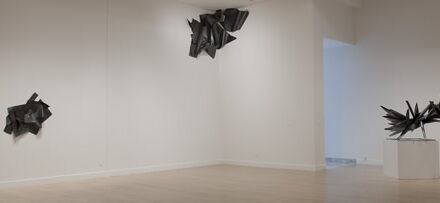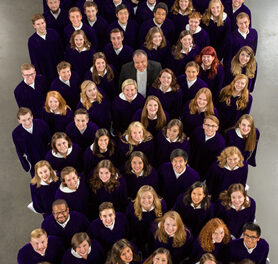In the early summer of 2015 when Carolina Performing Arts published its offerings for the 2015-16 concert season, the listing of a performance by the Chicago Symphony Orchestra conducted by music director Riccardo Muti nearly catapulted right off the page. Despite what, in my memory, may have been some of the highest ticket prices for an orchestral concert ever in this area, the seats were gobbled up faster than Halloween candy. The “price is no concern” philosophy when it comes to legendary musicians was also confirmed when telling a horn player friend of mine that I had been to this concert, he proclaimed, “I’d have paid anything to have been there.”
During the day leading up to the concert I was giving all of this a lot of thought. Are superstar orchestras really worth this expense – for all involved? Is their performance “better” than excellent mortal orchestras? Can and/or should reviewers even attempt to critique these performances? For self-important, snooty critics, would coverage devolve into a “gotcha” observation (since this is currently in the political news) like “the third trombone began his crescendo an eighth-note late.” Fortunately, for my enjoyment, once those very familiar first notes sounded – as it was a very familiar program – I forgot about all those deep thoughts and just luxuriated in the boundless mystery and joy of great music being played by great musicians.
In the weeks leading up to the concert, and even within the crowd milling about outside Memorial Hall on the UNC campus before the performance, I heard many complaints and grumbling about the programming. Beethoven 5 and Tchaikovsky 4 – on the same program? Too familiar! Where’s the overture? No concerto? There’s just no pleasing some people. I doubt that anyone who was there ended up being disappointed.
This was no scaled back touring orchestra. The stage was packed to its outer edges and back wall as the CSO brought its full forces to Chapel Hill. In fact, the string sections were as large as any I have seen on that stage. The very youthful 74-year-old music director, Riccardo Muti, gamboled out to the podium and with hardly any hesitation elicited the most famous motif in the history of orchestral music. Of course I’m referring to the opening of Beethoven’s Symphony No. 5, used and abused in everything from a symbol for allied victory in World War II (a little ironic considering the nationality of the composer) to a disco version in Saturday Night Fever. But Da-da-da Daaa is more than a concise hummable tune, for it weaves a unifying web throughout the symphony, varying from very subtle to in-your-face.
The CSO quickly demonstrated one of the somewhat counter-intuitive attributes of truly great orchestras: the ability to play very, very softly. Yes, of course they can play blindingly fast and mow you down with outrageous power and consistently perfect intonation, but beautiful, barely audible playing is a rarity and on this occasion we heard the best.
The second movement is familiar to any cellist who has ever auditioned for an orchestra: they always have the opening of this movement as an audition excerpt. The ten cellos of the Chicago Symphony played the theme, and its variations, with a unified sense of phrasing, tone, and rhythmic precision. The final two movements are a miracle of harkening back to the familiar opening motif plus a brooding, unprecedented transition to the finale. With certainly no disrespect to the other sections, it is the last movement where we finally get to experience in all its glory what many came to hear: the legendary brass section of the Chicago Symphony.
Tchaikovsky’s Symphony No. 4, completed in 1878, was written at a time of great turmoil and inner struggle, even for a man whose life was susceptible to such. He married a former student to whom he felt a physical aversion and professed his torment to his benefactor, Nadezhda von Meck. The marriage lasted three months. Perhaps one can read into this sprawling symphony a glimpse of the great Russian’s fractured psyche, but the music by itself is just fine, thank you. The opening fanfare by the brass section is as good as it gets. It blew the roof off of the venue but was not harsh, strident, or strained: we heard pure, unpolluted volume with exquisite round tones that sounded as unified as a great organ. This alone was worth the price of admission.
I don’t mean to leave out the rest of the musicians who blow into their instruments, since there were musical moments of ecstasy by the woodwinds, especially the principal oboist. Tchaikovsky wrote some beautiful solos in the lovely andantino movement and in the scherzo. It is in the scherzo where the oboe emerges like a brilliant light above the extended all-pizzicato passage for the entire strings. One can easily imagine a corps of ballerinas en pointe, flitting across the stage to this music, especially since ballet is never far from Tchaikovsky’s palette. The finale was played with all the fire and exuberance that the con fuoco designation suggests. The strings played blazingly fast passages with such rhythmic precision that made it seem nearly impossible that fifty or more players could be so unified. The woodwinds elided their phrasing as if they were a single, many-headed creature. But – and I speak as a string player – it was again the brass that made you want to treasure these moments and revel in the magnificence of such a high level of ensemble playing.
For those who bemoaned the lack of an overture, after an ear-crunching ovation, Maestro Muti finally stepped back onto the podium and, in his charming, heavily-accented English, thanked the audience and announced the encore: Giuseppe Verdi’s Overture to Nabucco. This bow to his countrymen was a fitting close to an exquisite evening of music that showcased the indefinable and unanswerable conundrum of just what is it that raises greatness to an even higher level. On second thought, just forget that and enjoy the music.













